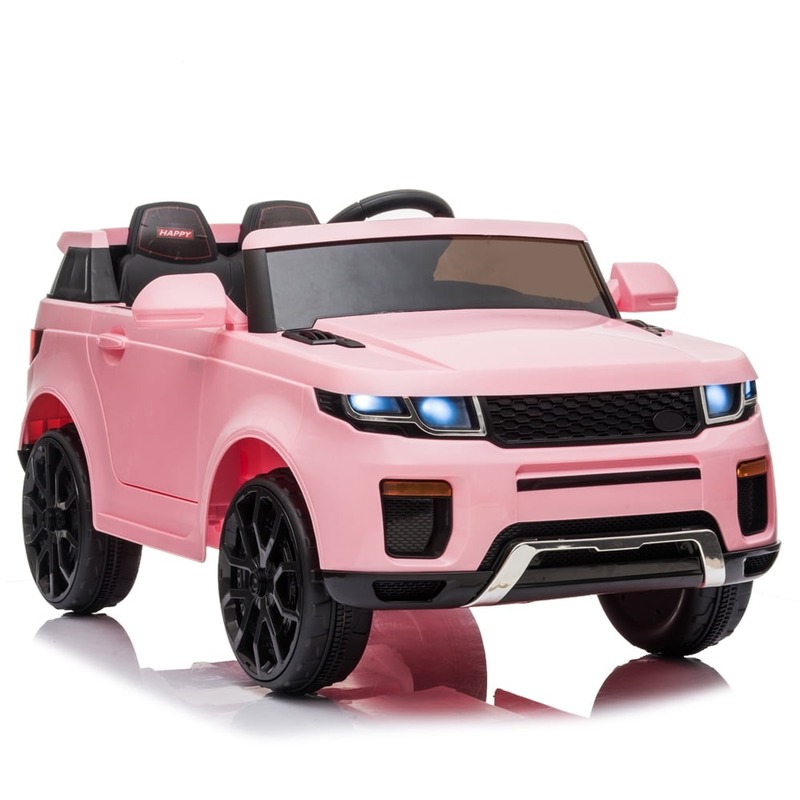The Rise of Electric Toy Cars
Electric toy cars have been gaining popularity at a rapid pace. These miniature vehicles mirror the revolutionary swing towards electric vehicles in the adult world. As parents and guardians grow more eco-conscious, electric toy cars have become a favored choice for young driving enthusiasts.
Key factors influencing the surge in interest include environmental benefits and the desire to provide innovative play experiences. Advances in technology have made these toys more accessible and affordable. They now boast features that were once exclusive to full-sized electric cars.
Market trends show a clear uptick in sales of electric toy cars. Toy manufacturers are continuously innovating with designs and features. As such, electric toy cars are not just playthings but a statement of a sustainable future.
Kids are naturally drawn to the fun and freedom of driving their own cars. Electric toy cars offer this experience without the fumes and noise of gas-powered engines. They appeal to children’s sense of adventure while satisfying parents’ demand for safe, clean play.
From birthday parties to holiday gifts, electric toy cars rate high on wish lists. They are more than mere toys; they represent a growing inclination towards renewable energy and technology. This trend is likely to accelerate as electric power continues to define the automotive industry.
In summary, electric toy cars are riding the wave of the green revolution. They’re not just entertaining the young but also educating them on the importance of sustainability. As they evolve, their impact on play, development, and environmental awareness only continues to climb.

Types of Electric Toy Cars for Different Age Groups
Electric toy cars come in many forms, catering to various age groups. Different models address the unique needs and abilities of children as they grow. Understanding the offerings for each age group helps in selecting the perfect ride-on toy.
Toddlers (Ages 1-3)
For toddlers, safety and simplicity are key. Electric cars for this age are often equipped with direct parental control. They feature low speeds and enclosed designs. These models often mimic real cars but focus on bright colors and sounds to engage the little ones.
Preschoolers (Ages 3-5)
As children grow, so do their motor skills. Preschoolers enjoy more detailed electric cars with interactive features. These may include functional doors, lights, and simple remote controls. Battery voltages may increase slightly to offer a bit more speed.
School-Aged Children (Ages 6-8)
School-aged kids are ready for a more authentic experience. Electric toy cars for them may resemble sports cars or other real-life models. These cars often come with higher speeds and more precise steering controls. Some even integrate MP3 players and educational aspects.
Preteens (Ages 9-12)
Preteens demand even more realism and capability. Cars designed for this group might have higher voltages and more advanced features. These include better suspension systems, stronger build materials, and more control options.
Each electric toy car type considers the developmental stage of its intended user. They evolve from simple, secure models to sophisticated mini-vehicles with high-tech perks. Parents should always match the electric car’s complexity with their child’s age and maturity level.
Incorporating electric toy cars into playtime offers fun and learning at every stage. These toys help in improving hand-eye coordination, spatial awareness, and cognitive abilities. As kids grow, electric toy cars provide an age-appropriate exploration of mobility and independence.
Key Features to Look for When Choosing an Electric Toy Car
When shopping for electric toy cars, certain key features set the best models apart. Here’s what to consider:
- Battery life and power: Check the voltage and expected run time. Longer battery life means more playtime.
- Safety features: Look for cars with durable materials, secure seat belts, and speed limits.
- Design and realism: Kids love cars that mirror real-life models. Features like working lights and doors add excitement.
- Remote control: For younger kids, remote parental control offers safety and peace of mind.
- Ease of use: It should be simple for kids to operate the car themselves.
- Educational value: Some cars are equipped with interactive features that boost learning.
The right electric toy car will be safe, exciting, and suitable for your child’s age and abilities.
Safety Measures in Electric Toy Car Design and Use
When designing and using electric toy cars, safety is paramount. Manufacturers and parents must prioritize this aspect to ensure a secure playtime. Here are key safety measures to consider:
- Sturdy Build: The car’s structure should be robust to withstand bumps and minor accidents.
- Speed Control: Electric toy cars should have adjustable speed settings. This allows for safer control as children learn to drive.
- Automatic Braking System: This feature ensures the car stops safely when the child removes their foot from the pedal.
- Durable Materials: Use non-toxic, durable materials to prevent breakages and ensure long-term safety.
- Secure Seating: Seat belts and secure seating are essential for keeping kids safe while in motion.
These features help prevent accidents and injuries, making playtime with electric toy cars fun and safe.

Environmental Impact of Electric Toy Cars
Electric toy cars reflect a growing eco-conscious society. Their impact is not just on the fun but also the environment.
Reducing Carbon Footprint
These small vehicles, unlike traditional play options, emit no pollutants when in use. This means a significant reduction in the household’s carbon footprint, starting from a young age.
Encouraging Sustainable Practices
Early exposure to electric vehicles instills eco-friendly values. Children learn about renewable energy and sustainable practices through play.
Eco-Friendly Materials
Manufacturers are using recyclable plastics and non-toxic paints. These efforts decrease the environmental impact of toy production.
Battery Disposal and Recycling
The batteries can be a concern if not disposed of properly. Educating about recycling helps reduce harm to the environment.
Energy Consumption
While electric toy cars consume electricity, the amount is far less than gas-powered toys. Using renewable energy sources for charging can minimize the impact further.
Electric toy cars can be a small step towards a greener future. They teach sustainability and offer cleaner play options.
Innovations in Electric Toy Car Technology
The world of electric toy cars is rapidly advancing with exciting innovations. Modern electric toy cars feature technology that once was limited to real cars. Here are few noteworthy technological advancements in this field:
- Smart Connectivity: Some newer models include Wi-Fi or Bluetooth connectivity. This allows kids to control their vehicles via apps on smartphones or tablets.
- Voice Command Features: Advances in voice recognition enable children to operate their cars using just their voice. This makes it easier and more interactive for kids to enjoy their ride.
- Integrated Learning Systems: Certain electric toy cars come with digital screens and educational software. These help children learn numbers, letters, and more while playing.
- Energy Efficient Motors: The latest models often feature more efficient motors that use less energy. This extends playtime and reduces the need for frequent recharges.
- Eco-Friendly Batteries: Improvements in battery technology not only last longer but are also environmentally friendly. Many electric toy cars now use batteries that are easier to recycle and safer for the environment.
- Autonomous Driving Technology: Some high-end models can simulate autonomous driving. This introduces kids to the concept of self-driving cars safely and interestingly.
Each of these innovations not only enhances the fun and engagement for children but also underpins enhanced safety parameters. Electric toy cars continue to evolve, ensuring they remain a popular and wise choice for eco-conscious families looking to combine fun with learning and sustainability.
How Electric Toy Cars Promote Learning and Development
Electric toy cars do more than entertain. They are vital tools for children’s learning and development. Here’s how they contribute:
Boosting Cognitive Skills
Operating an electric toy car requires decision-making and problem-solving. Kids decide when to speed up or turn, which boosts their cognitive abilities.
Enhancing Motor Skills
Driving these cars helps children refine their hand-eye coordination. Steering, starting, and stopping the car refine fine motor skills.
Teaching Responsibility
Learning to care for an electric car teaches kids responsibility. They learn about charging batteries and maintaining their vehicle.
Encouraging Creativity
Children often imagine various scenarios while driving, which enhances creativity. They create adventures and stories around their electric car play.

Fostering Social Interaction
When kids play with electric toy cars together, they learn to share and cooperate. This social interaction is crucial for their emotional growth.
Understanding Basic Mechanics
Kids learn basic concepts of mechanics. They understand how cars move and the role of electricity. This early education can spark interest in science and technology.
Electric toy cars are proving to be incredible learning tools. They instill crucial life skills and knowledge from an early age.
Popular Brands and Models of Electric Toy Cars
The market for electric toy cars is diverse, with many brands creating innovative and engaging models for children. Here’s a look at some popular brands and their standout models that have been delighting young drivers:
- Power Wheels: Known for their rugged designs, Power Wheels offers models like the Jeep Wrangler and the Ford Mustang, offering realistic experiences with added durability.
- Peg Perego: With a European touch, Peg Perego’s line includes the John Deere tractor series and the Polaris RZR, which are perfect for off-road adventures.
- Best Choice Products: They provide a wide range of electric toy cars, including stylish sports cars and even SUVs, such as the elegant Lamborghini and the rugged Land Rover.
- Little Tikes: Ideal for younger children, Little Tikes focuses on safety and simplicity, with models like the Cozy Coupe that have been a staple for decades.
- Radio Flyer: Known for their classic wagons, Radio Flyer also offers the Tesla Model S for Kids, complete with customizable options to mirror the full-sized Tesla experience.
These brands consistently push the envelope by adding new features, improving battery life, and ensuring safety while still keeping the fun intact. Parents looking to buy an electric toy car should consider these brands for a reliable and enriching playtime experience for their children.





